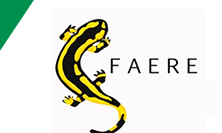This paper investigates how consumers value environmental characteristics through milk consumption, in order to estimate the optimal environmental policy. An experiment was conducted in France for eliciting the willingness-to-pay (WTP) for 4 products -
namely, regular cow's milk, organic cow's milk, regular soy milk and organic soy milk - with increasing levels of information about the relative impacts of these products on environment, animal welfare and health. Environmental messages focused on greenhouse gas emissions and chemicals used for getting feed. Our results underline a significant organic premium associated with both cow's and soy milks, and a significant premium for soy milk compared to cow's milk. These WTP are integrated in a model measuring the impact of regulatory instruments. From this model, the welfare maximization leads to the selection of a positive tax on regular milks coming from cows and soy associated with a positive subsidy on organic milks coming from cows and soy. This estimated tax on regular milk is higher than the tax that could be alternatively computed from carbon prices, determined by the Intergovernmental Panel on Climate Change (IPCC). Such a tax based on the IPCC would be too low for being efficient according to our model.
Programme > Papiers par auteur > Marette StephanConsumers' preferences and environmental tax : results from an experiment with milk
1 : AgroParisTech
-
Site web
Institut national de la recherche agronomique (INRA) : UMREconomiePublique
16 rue Claude Bernard F-75231 Paris Cedex 05 -
France
2 : Université Paris-Saclay
-
Site web
Institut national de la recherche agronomique (INRA) : UMREconomiePublique
Espace Technologique, Bat. Discovery - RD 128 - 2e ét., 91190 Saint-Aubin -
France
3 : INRA
Institut National de la Recherche Agronomique : UMREconomie Publique
4 : Université Paris-Saclay
* : Auteur correspondant
Institut national de la recherche agronomique (INRA) : UMREconomiePublique
|




